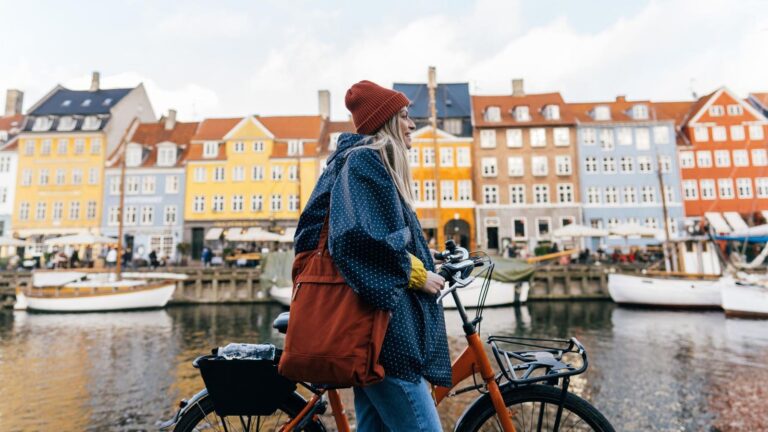In Copenhagen, cycling is more popular than driving. Tourists are now encouraged to go there … [+]
With a population that loves cycling and has a close relationship with nature, Copenhagen has long been considered one of the happiest and greenest cities in Europe.
Denmark’s capital has several swimming pools in the heart of its harbors, a ski slope atop a power plant, a thriving organic food scene and a rapidly electrifying public transport system. More than two-thirds of the city’s hotels hold an eco-certificate.
Today, city leaders want to build on this sustainable foundation and invite tourists to participate in Copenhagen’s green lifestyle.
Rewards for greener choices
A new pilot project, CopenPay, will reward actions such as cycling around town, participating in clean-up projects or volunteering in green projects with a variety of rewards and experiences.
These include museum visits, kayak rentals, free coffee or even a vegetarian lunch made with local products. Eco-friendly actions thus become a currency for enjoying cultural experiences in Copenhagen.
While many European cities are suffering from overtourism and are actively introducing measures to restrict tourism, it is refreshing to see a city focusing on attracting a different type of tourist, more in line with the values of the local population.
Mikkel Aarø-Hansen, CEO of Wonderful Copenhagen, said tourism must stop being an environmental burden “and become a force for positive change.” An important step in this transformation, he said, is to “change the way we move around a destination, what we consume and how we interact with locals.”
The project is unlikely to lead to major changes, but Aarø-Hansen says there is a big gap between visitors’ desire to act sustainably and their actual behaviour. He says CopenPay “is a small, experimental step towards creating a new mindset among travellers.”
24 attractions offering rewards
During this summer’s pilot project, a total of 24 cultural venues, culinary experiences and urban activities will offer special deals to visitors making more sustainable choices.
While there are plenty of free coffee and ice cream options available for taking public transport, the most engaging experiences are ideal for visitors looking to immerse themselves in Danish design and culture while also seeing a bit of the city.
For example, visitors who arrive at the National Gallery of Denmark with plastic waste can take part in a workshop to turn it into art. Although it takes place in the children’s area, the workshop is open to everyone.
Visitors who help maintain the beautiful gardens of the Karen Blixen Museum can learn more about the famous Danish author and storyteller with free admission to her former home-turned-museum.
At Cisternerne, the city’s former water reservoirs transformed into an underground art gallery, visitors can enjoy a free guided tour simply because they arrive on foot or by bike. As with some CopenPay offerings, presentations only take place at specific times, so you need to plan ahead to make the most of the initiative.
Other highlights include free kayak rental in exchange for trash pickup and a free vegetarian lunch in exchange for volunteering at an urban farm.
Most CopenPay activities are only available during the summer, so don’t wait if you want to participate in the pilot. Some also require prior registration. Check the CopenPay website for more details.


